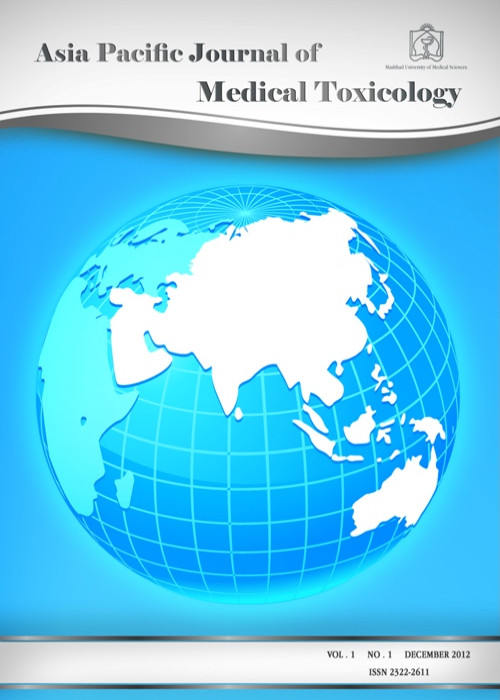Implementing New Regulation Promotes Health but May Increase Inequality
Author(s):
Article Type:
Editorial (دارای رتبه معتبر)
Abstract:
Avoidable systematic differences in health status of different population groups are called health inequalities. They cause significant social and economic costs to both individuals and societies (1, 2).
For example, life expectancy at birth among Canadian First Nation Population is lower (73 for males and 78 for females) than that of total Canadian population (79 and 83, respectively, projected for 2017) according to Statistics Canada (3). In this commentary, we used Canadian First Nation Population, coastal residents and Native American population who self-harvest as example.
Toxicology regulation could be considered as a determinant of health, as policies introduced by regulatory toxicology agencies influence health services and are effective at the community level. These policies, however, could be distributed differently among the subgroups of the populations in a systematic manner, which may be a source of inequality.
Consumption of home grown or self-harvested foods can result in exposure to various chemicals but such contaminant levels in these products are often not monitored by inspection agencies (4). To date, many drivers of health inequality have been defined, such as gender, race and economic growth. However, no literature is available on “inequality” and “potential food toxicity”. We argue in this editorial that while all population including Canadian First Nation Population, Coastal Residents and Native American population groups are benefitted from implementing new toxicology regulations, the magnitude of health inequalities might increase for some minority groups.
Health Canada has set a maximum level of 0.5 mg/kg (50 ppm) in the edible portion of all retail fish, subject to some exceptions (5). This level is applied to commercial fish and enforced by the inspection agencies. However, fish consumption advisories that reduce the risk borne by the general population might not provide much health benefit to subsistence fishermen, which include First Nation (Native American) populations.
In another example, and following an outbreak of amnesic shellfish poisoning (ASP) in Canada in 1987, which is related to high exposure to Domoic acid (DA), a neurotoxin,regulations were put in place in North America, limiting the concentration of Domoic acid to 20 ppm in commercial shellfish products (6, 7).
Prior to the promulgation of regulations limiting mercury or DA concentrations in fish and shellfish, the general population consuming commercial products and the Native American-First Nation population, largely consuming self-harvested products, were at similar risk of exposure to these contaminants. Limiting mercury concentration to 50 ppm and DA concentration to 20 ppm in commercial products thus protects the general population, a step that certainly should be celebrated. First Nation population, who mainly self-harvest, did not benefit from this protection, thus increasing the health inequalities with regard to exposure to seafood contaminants (8).
These examples show that (i) inequality exists regarding potential food toxicities and (ii) a new regulation can create or exacerbate health inequalities. We suggest the need to consider the impact on potential health inequalities as part of the deliberations on new toxicology regulations. As different subgroups of population might be affected by a new regulation to a different extend, strategies should be considered to insure that increased health inequalities do not result.
In case of First Nation populations and subsistence fisherman, and while they are generally benefitted from implementing new regulations on contaminant concentrations of commercial foods, a subset of the population who self-harvest may not be benefitted equally. We would like to suggest including educational materials and guidance for self-harvesters; a recommendation that should go to all new regulatory toxicology guidelines.
The proposed dimension adds to the current higher burden of adverse effects from contamination to land and waterways that are caused by industry on First Nations’ territories and coastal areas.
Language:
English
Published:
Asia Pacific Journal of Medical Toxicology, Volume:7 Issue: 4, Autumn 2018
Pages:
90 to 91
magiran.com/p1944003
دانلود و مطالعه متن این مقاله با یکی از روشهای زیر امکان پذیر است:
اشتراک شخصی
با عضویت و پرداخت آنلاین حق اشتراک یکساله به مبلغ 1,390,000ريال میتوانید 70 عنوان مطلب دانلود کنید!
اشتراک سازمانی
به کتابخانه دانشگاه یا محل کار خود پیشنهاد کنید تا اشتراک سازمانی این پایگاه را برای دسترسی نامحدود همه کاربران به متن مطالب تهیه نمایند!
توجه!
- حق عضویت دریافتی صرف حمایت از نشریات عضو و نگهداری، تکمیل و توسعه مگیران میشود.
- پرداخت حق اشتراک و دانلود مقالات اجازه بازنشر آن در سایر رسانههای چاپی و دیجیتال را به کاربر نمیدهد.
In order to view content subscription is required
Personal subscription
Subscribe magiran.com for 70 € euros via PayPal and download 70 articles during a year.
Organization subscription
Please contact us to subscribe your university or library for unlimited access!


